1927 Buick Master Six - A Spin in Pop's Baby - Vintage Vehicle Driven

Mrs. G.L.H’s Baby as Restored by Dad
This summer, I made an appointment to drive my departed father’s stately 1927 Buick Master Six. My brother-in-law, Tom, residing in Minnetonka, Minnesota is the custodian of the Delaware Green, 120- inch wheelbase, Model 27-47 four-door sedan. The plan was to make a winding summer drive through that fine suburb of the Twin Cities in Fitzgerald's Great Gatsby style.
The Cream / Bubbler / Beer City to Mini Apple run was made in this journalist's relatively contemporary 1983 Wolfsburg Edition Scirocco. Once back in Minnetonka, it was time to become re-acquainted with the only antique car my late father, Elton, restored. Dad located the 27-47 in a mid-1970s Milwaukee Journal classified advertisement. The paint, interior and brakes were original. With a spare engine block already on hand, he took a chance on the vintage automobile suffering from a cracked block.
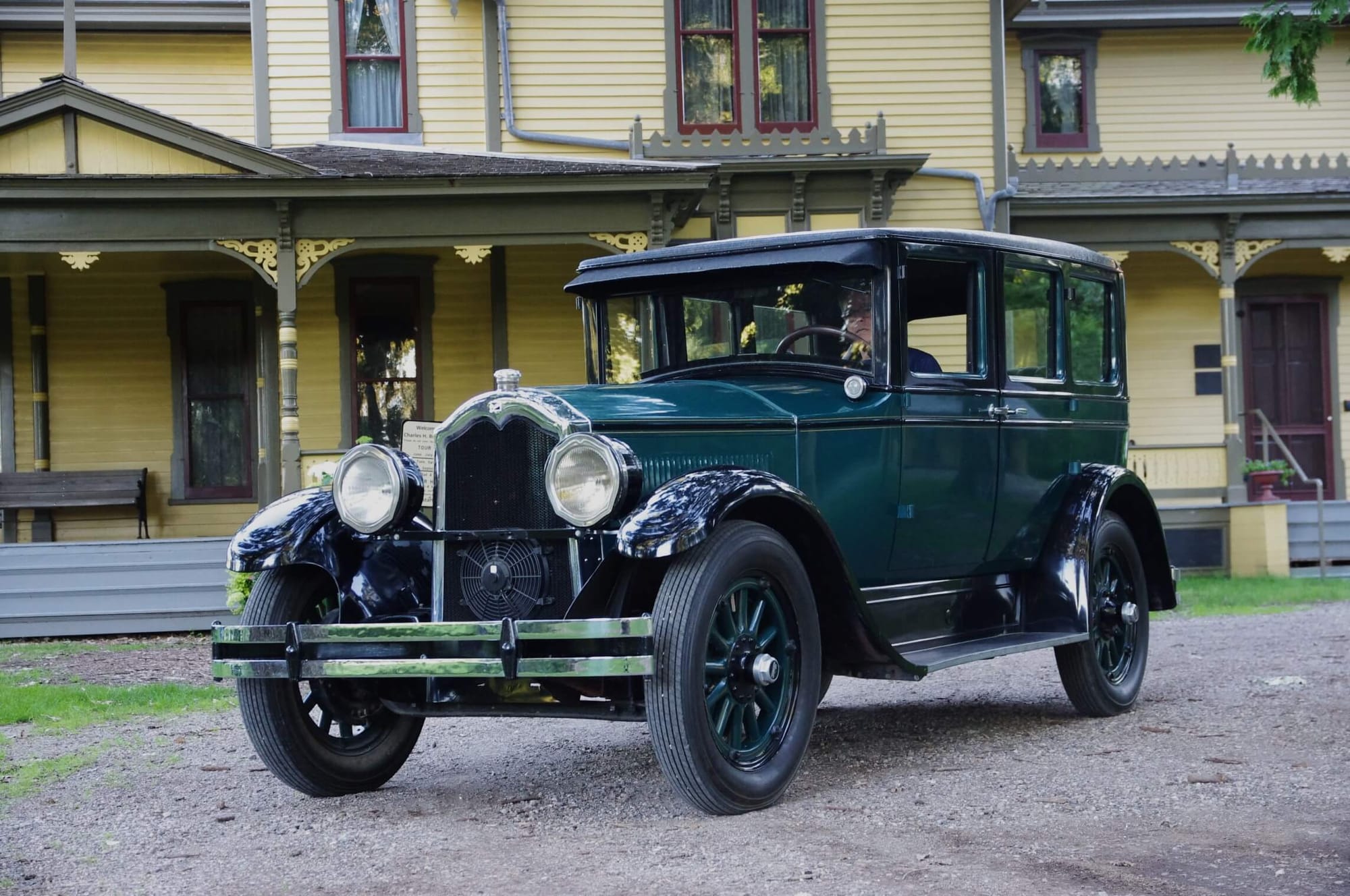
The Buick Master Six was conceived before synchromesh gears, standardized shift patterns, automatic chokes, self-advancing distributors & spark, crunch-free shifting and twist-key starting became normal operating procedure. A primitive braking system of rods and cables, contracting shoes outside drums, were hardly eager to slow the Master Six down.
Wide running boards support the climb into the cabin. Occupants sink into soft sprung deep-blue mohair front and rear sofas. The front davenport is as immovable as a diner's fixed booths. Glancing at the wooden steering wheel with a vivid imagination would conjure the image of a Prancing Cavallino Nardi helm.
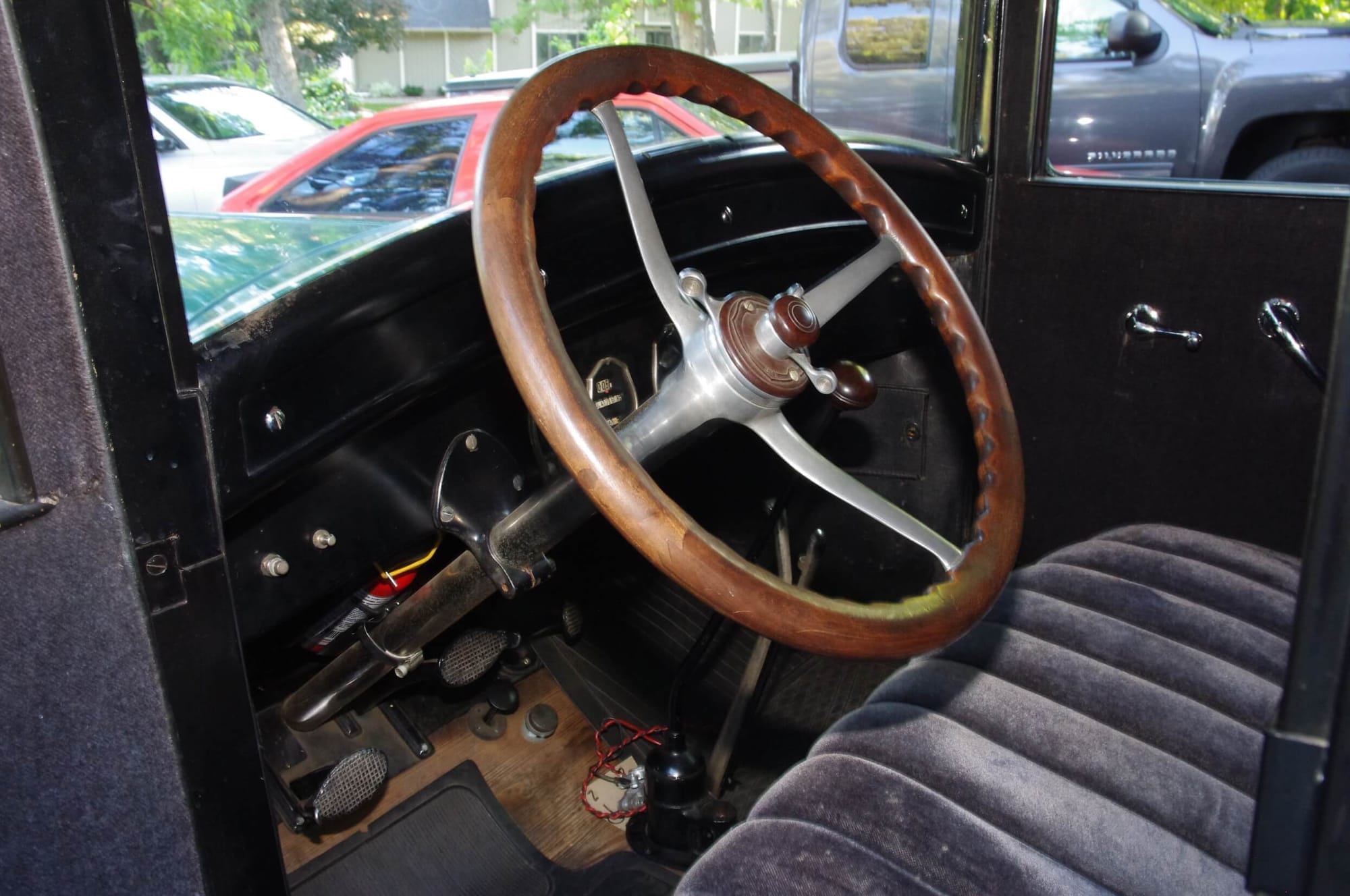
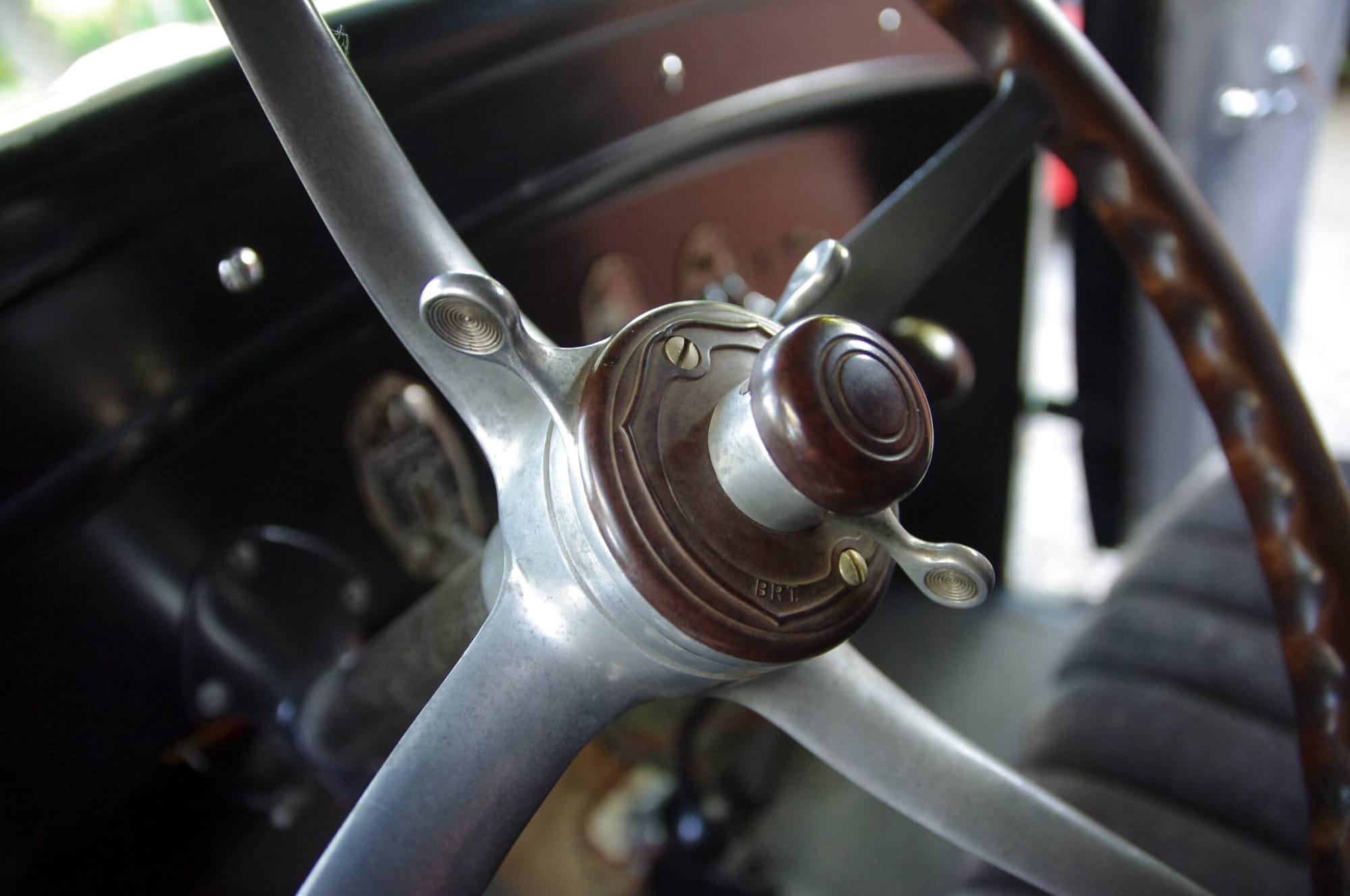
1927 Buick Master Six: spark, dimmer & throttle levers flank the steering wheel hub
Sporting, though the materials are, manipulating the wheel is shopping cart lively, and there is a deprivation of road sensation. Old timers suggest that built-in friction was intended to excise steering kickback on unpaved roads. There is a sensation of stirring an assembly of metal bits tugging at heavy wood spoked wheels with detachable rims. Unable to track out, exiting a corner in the Buick Master Six requires constant guidance.
The Buick’s control hoop has, in a sense, a modern affectation. Sure, there’s a horn button- an elegant Bakelite one. There are three levers, the push buttons equivalents of the Roaring Twenties. Prior to starting, the left lever slides downward retarding the spark timing via rods connected to the distributor. Another, to the right, is lowered half way to open the throttle. Finally a third one operates the headlights’ high beams.
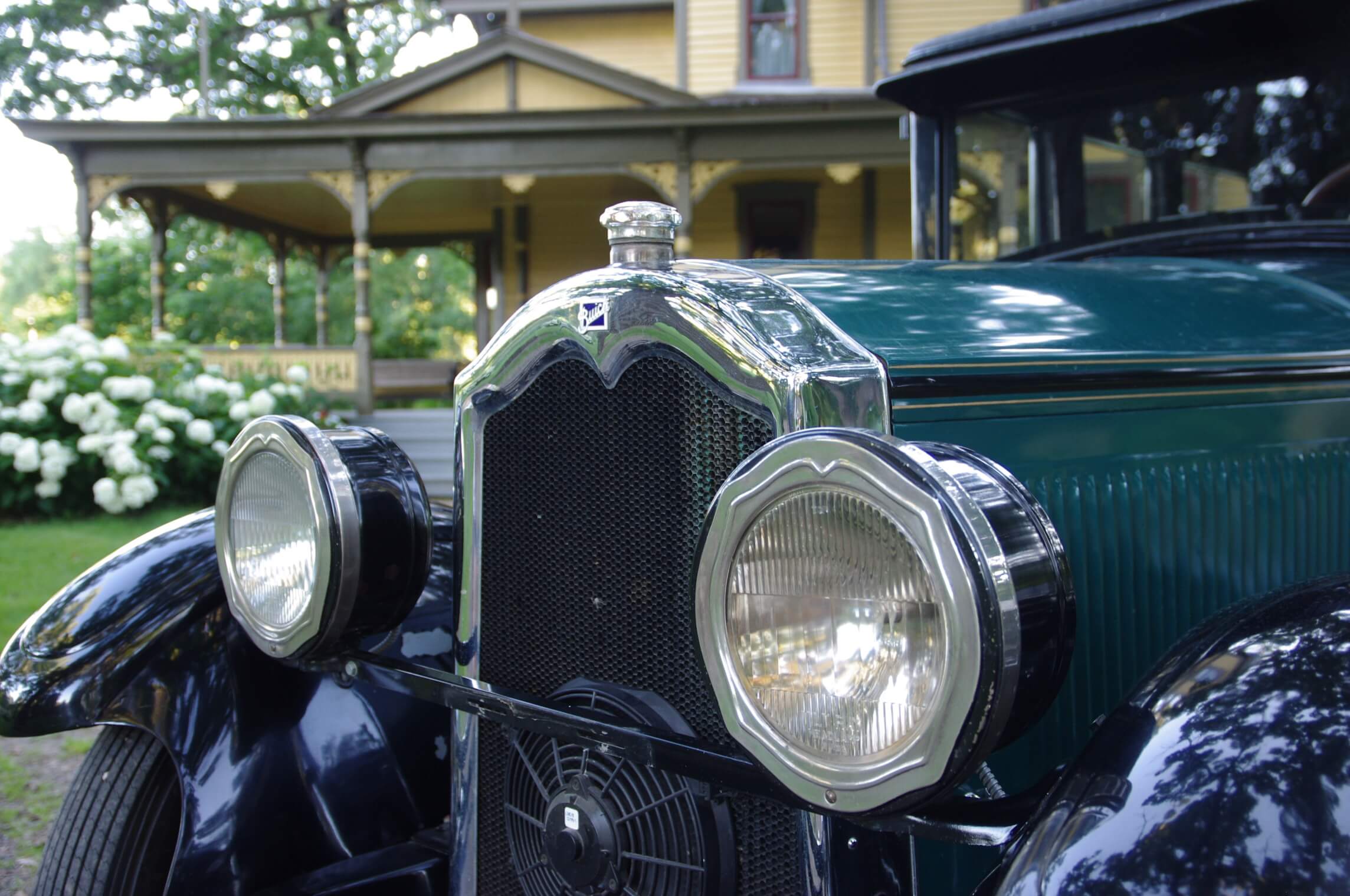
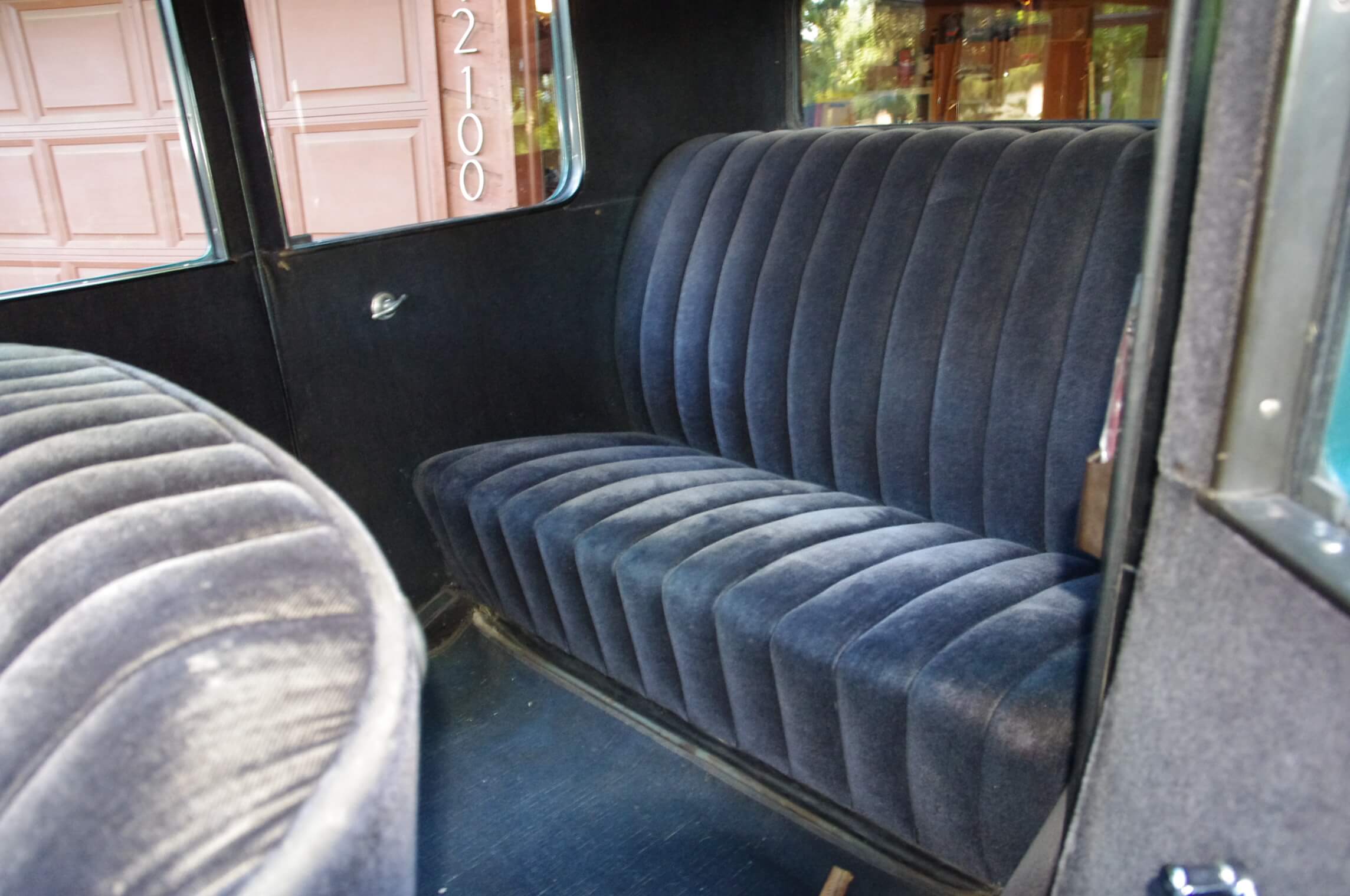
1927 Buick Master Six: the radiator shell peeved Packard and the seating is mohair covered springy benches
In contrast to the 21st century battery electric vehicle single pedal driving, the learning curve for operating a 1927 Master Six involves four four pedals with a nearby foot-rest peg. As a testament to engineering foresight, placement of the clutch, brake and throttle line up with their location in modern manual transmission equipped cars.
The old time Buick’s narrow footwell manages to host wide metal-faced clutch/brake pedals. Raised side prevent feet from slipping off. Depressing the clutch pedal responds with a satisfying “THUNK.”
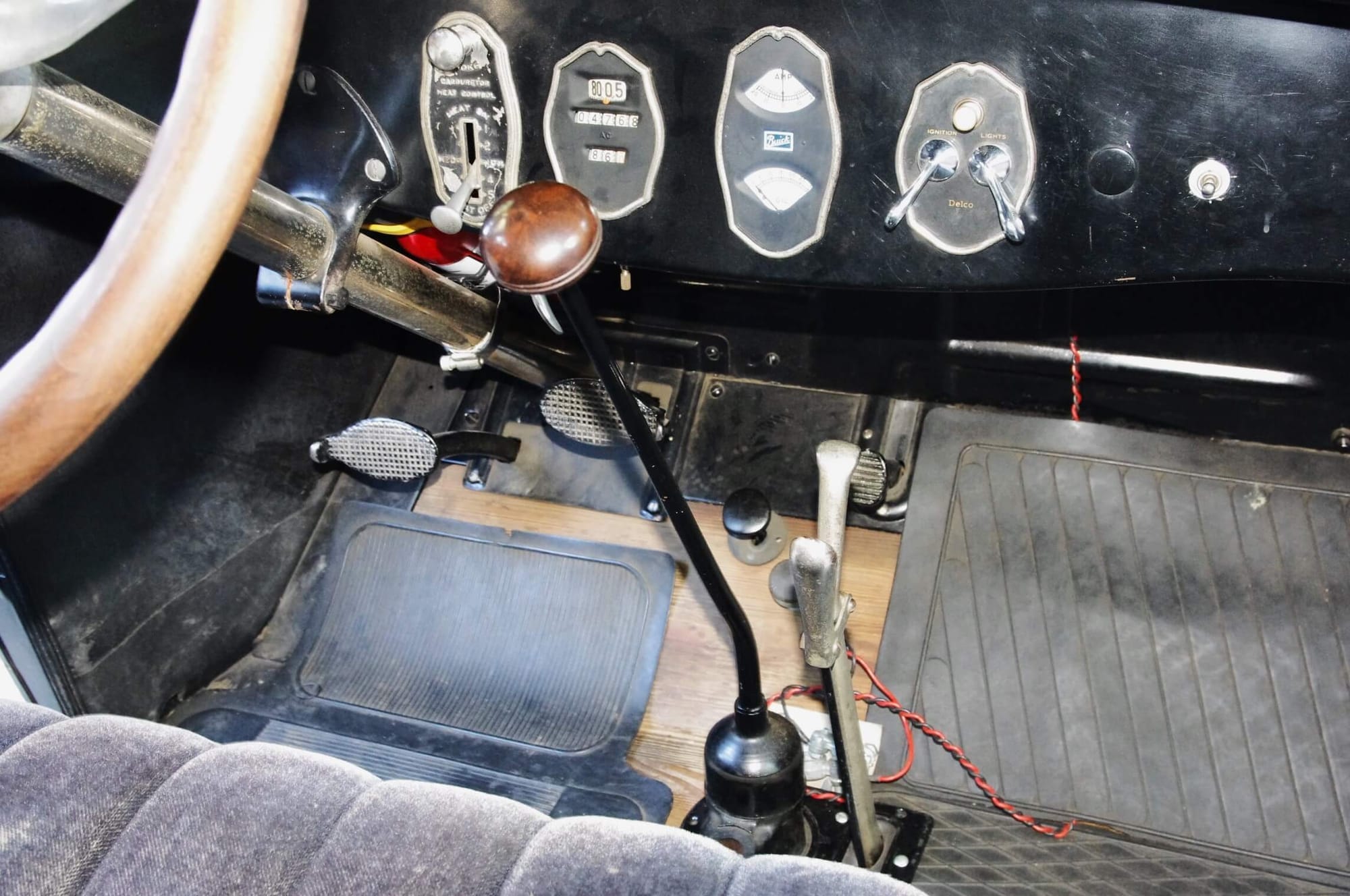

1927 Buick Master Six: 3-speed transmission requires double clutching; Floorboard once meant wooden
The starter is operated via the fourth pedal to the right, and requires lifting a dashboard toggle for the ignition. Not yet having come into their own for ignition purposes, twisting the key cylinder in the stately sedan merely released the shift-lever lock. The actual starting process resembles an jet airliner's checklist: releasing the parking brake lever, shifting to neutral, setting the steering wheel hub spark and throttle levers, opening the dashboard choke knob, pulling the dashboard choke knob, moving the ignition lever, and stomping on the starter pedal. The sound is akin to an old Sears Elgin outboard motor.
The '27 Master Six transmission shift pattern is referred to as “backwards” H. Reverse is toward the right and forward. First is toward the right and rearward. Second is to the left and forward. Third is toward the left and rearward. Intuition defying even back in the late 1920's, the urgency to engrave the pattern on the polished orb atop the stout, long legged lever somehow eluded the folks at General Motors. At least the unfiltered shifter feedback apprises the operator of gearbox engagement.

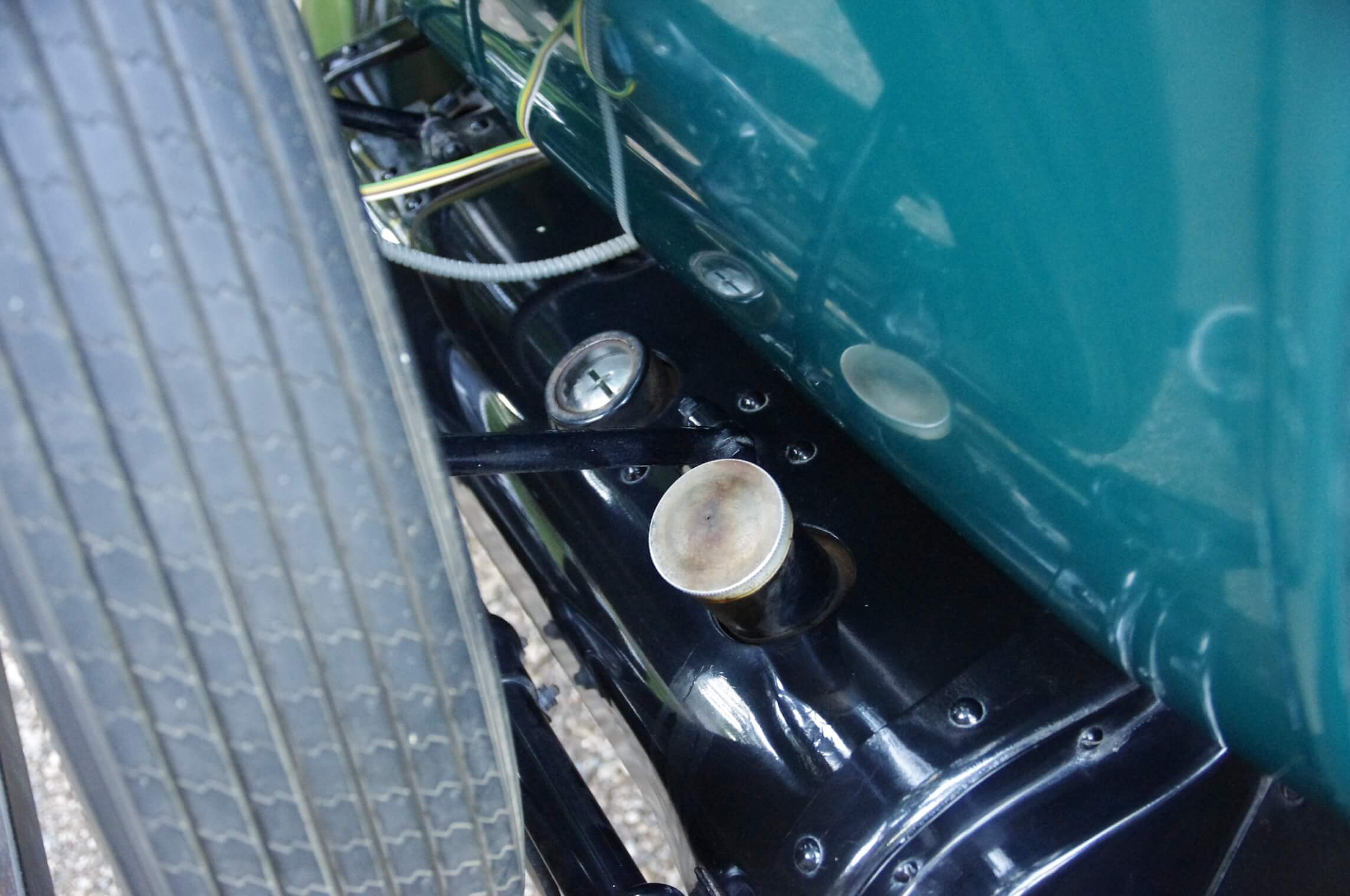
1927 Buick Master Six: 274 cubic inch OHV Straight Six developed 75 horsepower
By this method the Master Sixes' 274 cubic inch overhead-valve Straight Six mill fires up with a nasal drip flow cough. Pushing in the choke knob to advance the timing is a teaspoon of Guaifesenin cough syrup. The 75 horsepower engine changes its tune to a farm tractor's snort. Then it's time to return the throttle lever back to the idle position.
Embarking on driving the 1927 Master Six it is worth considering Buick’s period pitch. GM’s Buick Division communications manager, Angelique Williams, was helpful in searching the advertising archives. Williams apprised that Campbell Ewald, the firm which had been representing sister division Chevrolet, was charged with promoting the '27 Buicks.
Alfred Sloan, who historian David Hounsell reports was a pioneer in aspirational brand upselling approach, was a Cambell Ewald client before he joined GM. A major reason that the "General" succeeded as a multi-brand conglomerate early on was Sloan's implementation of “universal” machine tools. They resulted in less complex annual model changes, to induce a demand for fresh styling, increased comfort and more powerful powertrains.
Another novel Campbell Ewald campaign for the Master Six was the feminine one. After all, the Roaring Twenties, launched a new era of progressive living, and what could be more liberating and more symbolic of prosperity than driving an automobile. Thus, a 1927 Ladies Home Journal advertisement ran the cliche title of the Greatest Buick Ever Built.

A full color picture of the "princely" Buick, in the same Duco Delaware Green as dad's, (specific to the 120- inch wheelbase models), was set in an idyllic countryside winter setting, having arrived at a frozen pond for an ice skating excursion. In the scene the presumptive drivers, some very fashionable ladies, have used the running boards of the Master Six to don ice skates, preparing to join two boys already chasing a hockey puck on the ice.
The Norman Rockwell -esque image is accompanied by a corny, cliche testimonial, of subjective compliments, from an anonymous Mrs. G.L.H., concluding "Other Cars Haven't the Style of My BUICK." Had Carroll Shelby been on the late twenties scene, he might have tangled with Buick over massaged Goes Like Hell (Some more) Dodge Omnis and Chargers. Instead the more prestigious Packard marque, having taken issue with the Buick's copied radiator shell, made a bolder counter-boast: When prettier cars are built, Packard will build them.
Typical Madison avenue automotive verbiage, such as “vibrationless beyond belief," constituted pure hyperbole. However, the 1927 Buick Master Six 27-47 could still candidly boast innovations. Automotive historian James Flink cited the Master Sixes' adoption of the rubber engine to frame mount ushered in an era of improved isolation from harsh vibrations. Additional headway into vibration reduction came from crankshaft counterweights, a torsion balancer and lighter pistons. The Buick Master Six reputation for durability and refinement even found its way to China where the Last Emperor Puyi acquired 1924 Master Sixes. Consequently, it established the Buick nameplate as the most esteemed in China to this day.
Higher fuel octanes being developed at the time took advantage of the Master Sixes new-found ability to spin at higher crank revolutions. Also on the combustion side, fresh air crankcase ventilation reduced oil contamination and wear. The straight six-cylinder motor was so deserving of the plaudits in Tad Burness' "Auto Album," that during the depression many were put into tractor use. Two Master Six chassis and drivetrain conversions were made on the family North Dakota farm, hence the donor block for dad's restoration.

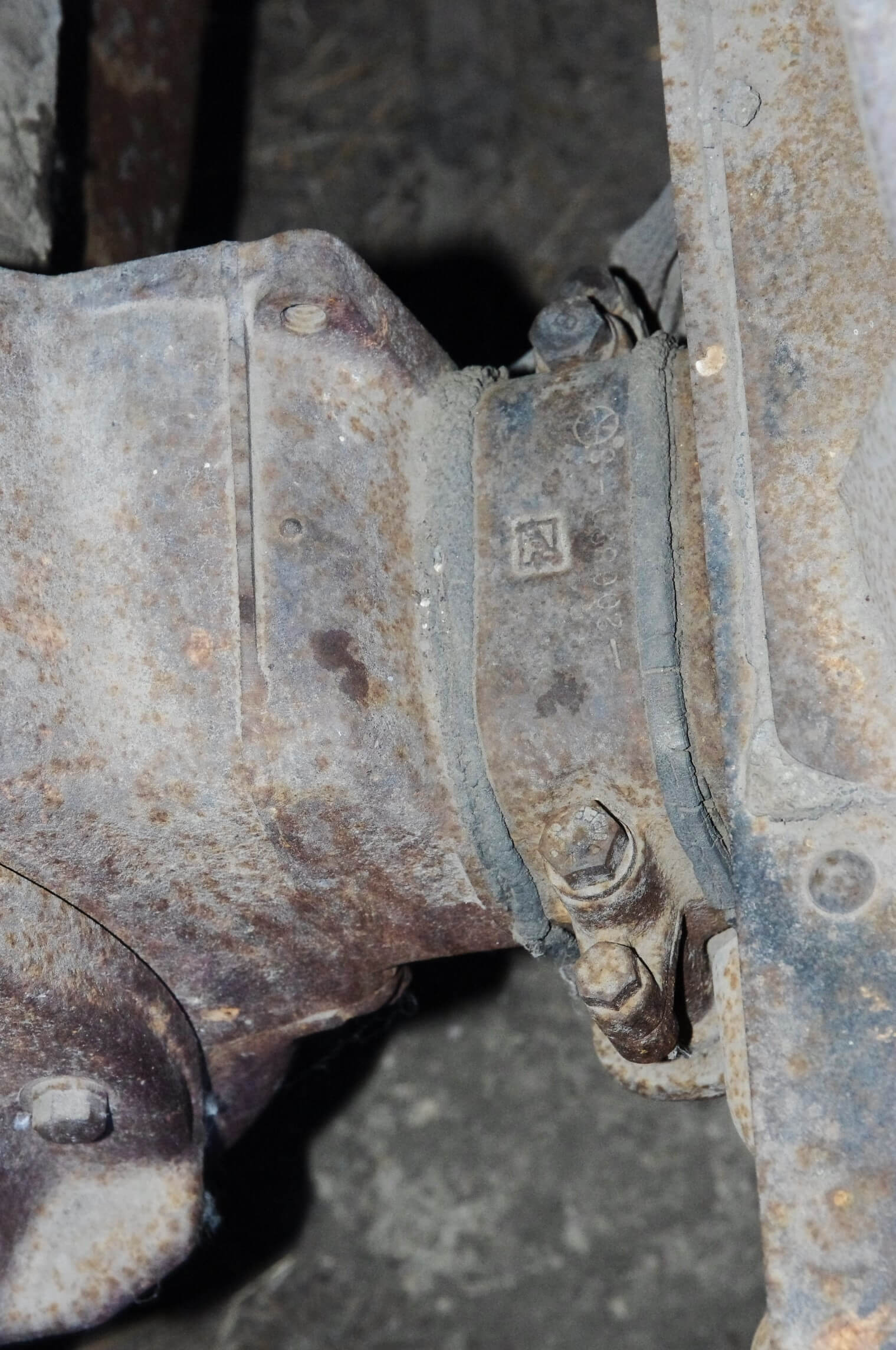
1927 Buick Master Six: introduced enduring powertrain innovations
There is no getting around the arcane "double clutching" method to get the 1927 Buick Master Six 47 going, with its crash-box transmission. Participants in modern single clutching synchromesh gears would already be familiar with left pedal depressed for gear selection of first gear, followed by right throttle pedal application, while releasing the clutch pedal. Prior to selecting second and third gears, however, neutral must be engaged, followed by applying throttle to raise engine speed to match road / gear speed, then depressing the clutch pedal to engage the gear.
Hilly Minnetonka by-ways necessitate feeding the aristocratic old Buick gas while clutching to upshift, resulting in occasional proletarian gnashing of gear teeth. If only the Master Six 47 had contemporary "rev matching' technology which lets a gadget called a computer to match engine speed for jerk-free manual lever rowing.
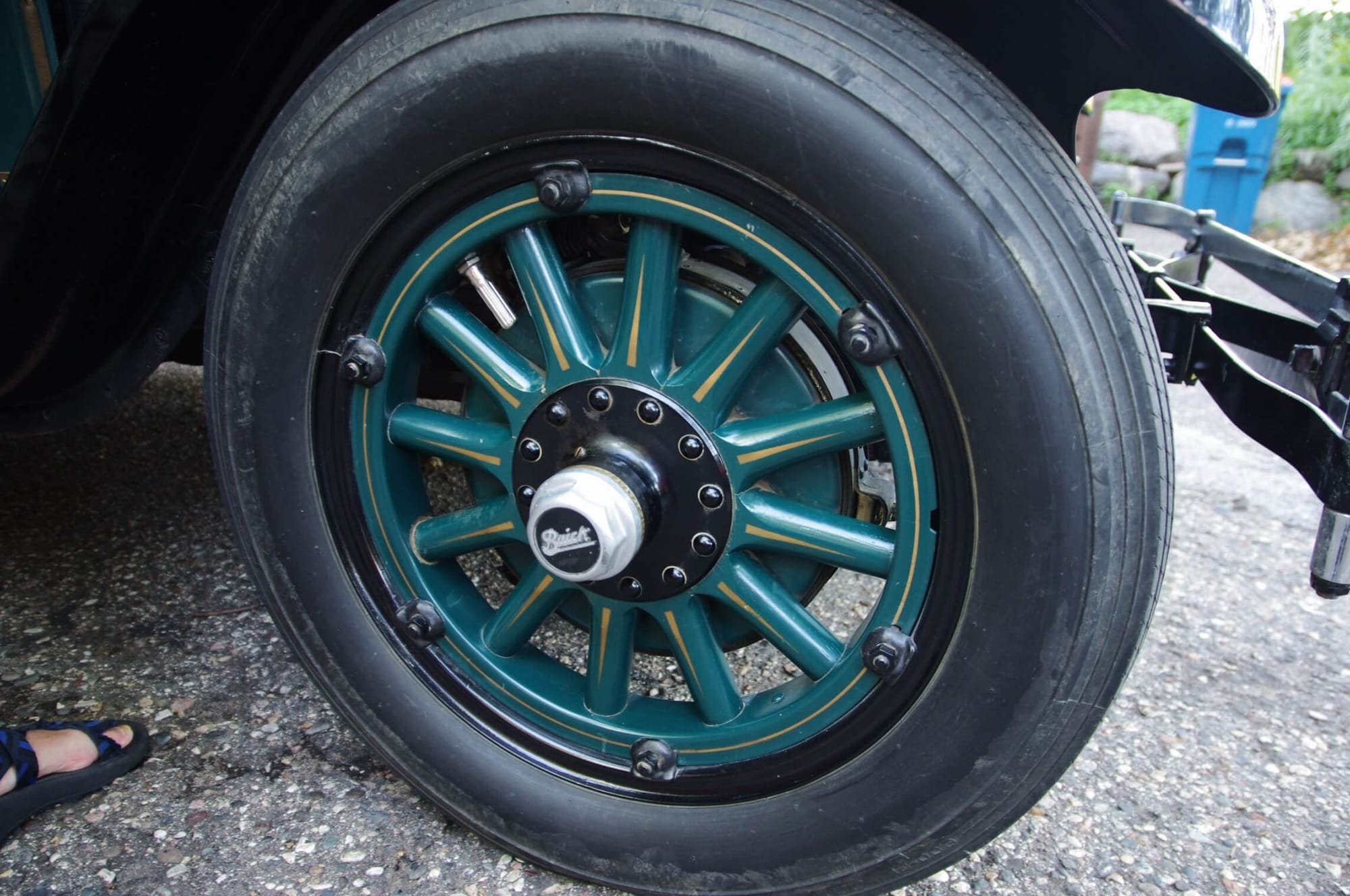
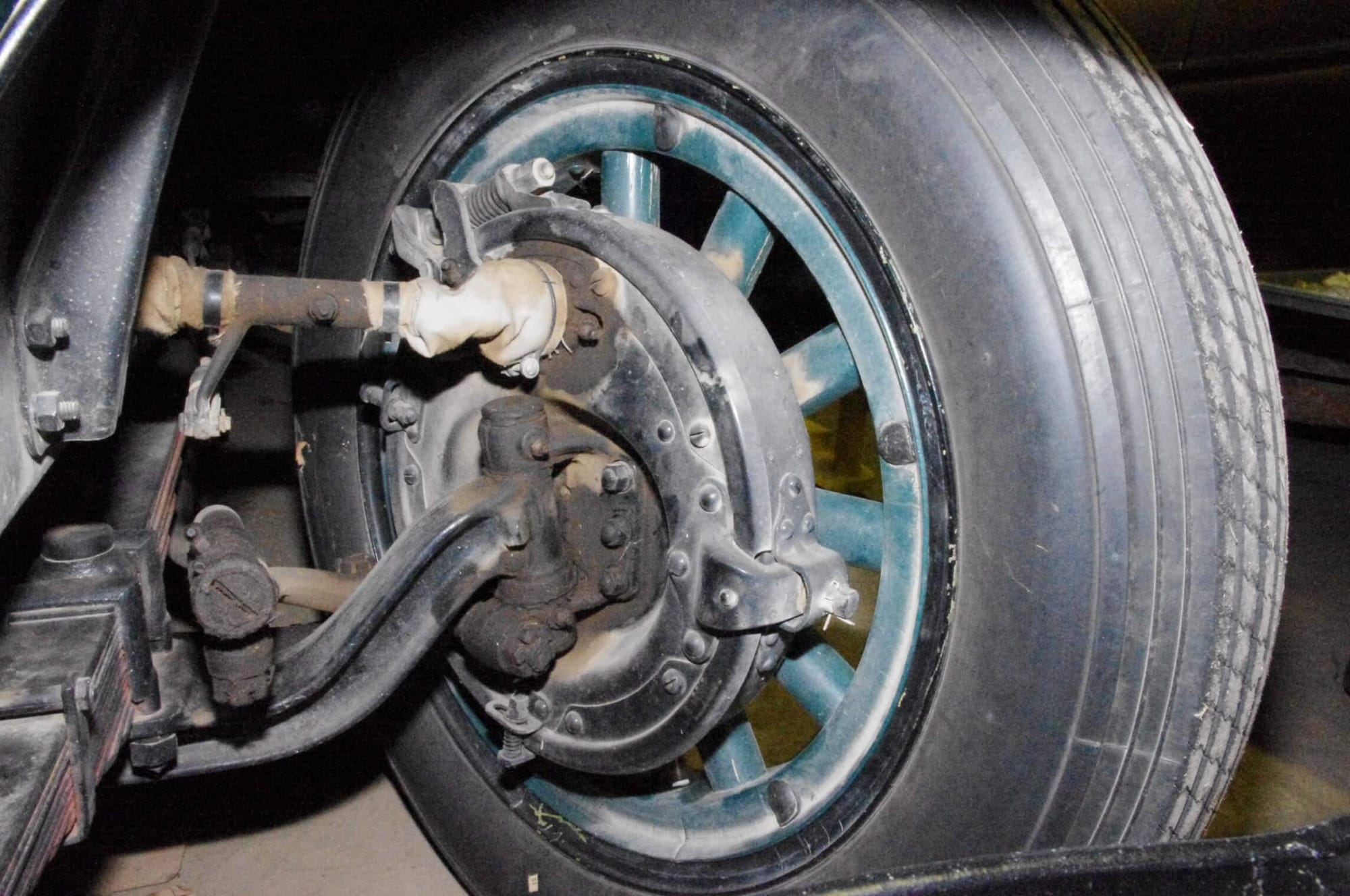
1927 Buick Master Six: wooden wheels & brake shoes squeeze drum exterior
For those wondering how the fashionable Mrs. G.L.H. and other women coped with such laborious motoring, my petite grandmother managed with the Master Six. Lest it be said that unaccustomed males will find the 1927 Buick less than a handful. My vintage vehicle savvy brother-in-law, ever the check-pilot, remarked about some grinding from a defiant steering wheel, the wee bit excess speed carried into the esses, and forgetting to use hand signals.
On the topic of creature comforts, the 1927 Buick Master six cabin climate control is elemental. A crank elevates the windshield, opening a slot, while hoping for a brisk gale. Cranking the slot to a lower angle airs out feet on the floorboard.



1927 Buick Master Six: steel over wood body by Fisher and tilt-out windscreen bottom climate control
The day after Tom put the Buick in its Minnesota garage, I reacquainted myself with my decades less vintage VW. Designed for jaunts on unlimited speed Autobahns, the Scirocco feels in its element on a 70 miles per hour interstate cruise headed west toward Carrington North Dakota. The horizon west of the Twin Cities flattens. With fewer light obstructing trees, the sky becomes immense. Named for a Saharan wind, the Karmann body remains impressively entombed against wind rush, filters road noise and keeps the mechanical tones distant. Even back in the modern malaise era, Volkswagen figured out a robust and efficient single overhead cam 1.8-liter straight four-piston powerplant design.

Despite having clocked over 350,000 miles, the Scirocco lets off a distinctive Teutonic hiss, denoting a commotion-less sense of mechanical efficiency. Only the occasional air conditioner compressor cycling will briefly drag on the VW's considerable 90 horsepower (given its one ton weight).
True, a modern economy car can dust this 1980's German touring coupe. Similarly, the four decades young sport car seems space age advanced over the nearly century old stately sedan, which creaks and permits engine heat and road sound through the wooden floor boards. Unquestionably, modern cars have become sterile go-fast appliances, blurring the scenery between Points A and B. Instead, dad's vintage Buick represents the dawn of grander automotive touring, best suited to perusing the great American landscape.





Comments ()